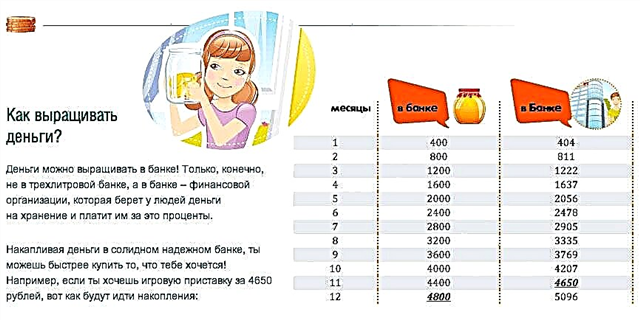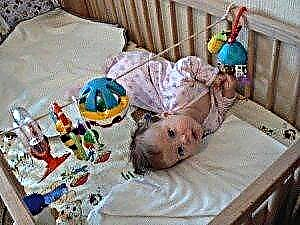Many mothers note that their babies, lying on their backs, turn their heads to only one side. In the first days after discharge from the hospital, this is not so noticeable, because young parents are just getting used to their responsibility and do not notice the peculiarities of the baby. After some time, adults note that the child begins to bend unnaturally or categorically refuses to turn his head to the other side.

The baby's head is on its side
Why does the violation occur
The most common reason a baby turns his head to one side is because of an incorrect intrauterine position. The closer the delivery, the larger the fetus. A child for about two months is in cramped conditions and cannot change his position. If, while in the womb, the baby has placed his head unevenly, then for the last month and a half he will not be able to change his position. As a result, the skull may become jammed or torticollis may occur.
Many scientific studies on medicine argue that birth trauma can be the cause of torticollis, when muscles are particularly affected during the passage through the birth canal. Torticollis is especially common when the midwife decides to perform a natural delivery from the breech presentation.
Important! Delivery with breech presentation involves pulling the baby out of the birth canal by the legs. This prevents the doctor from controlling the position of his head.

Breech presentation
How to identify torticollis in a newborn
Despite the fact that the overwhelming majority of newborns have a “favorite” side for head turning, not everyone is diagnosed with torticollis. It is known that 55% of all babies with torticollis are boys. This diagnosis is considered the third in the list of common congenital diseases, second only to hip dislocation and clubfoot.
Signs on the basis of which the diagnosis of torticollis is made:
- the child's head not only turns in one direction, but also has a constant tilt;
- palpation reveals a violation of the muscle tissue located on the side of the slope;
- there is an asymmetry of the face and skull - slow vertical growth of bones from the side of the slope;
- attempts to tilt the head to the other side cause pain;
- the initial stage of scoliotic changes in the spine is observed.
Attention! If a child, lying on his back, always turns his head only in one direction, but there is no tilt to the shoulder, this is not torticollis, but an asymmetrical growth of the skull bones due to intrauterine constraint. Such problems disappear with the growth of the skull without medical intervention.

One way turn - not torticollis
Examination of infants
Mom must undergo a routine examination with a baby at 1, 3, 6 months and a year. Parental responsibility can save a child from disability if at the age of 1 month the mother does not forget to visit the orthopedist. A specialist in the early stages can identify a shortening of the cervical muscle and prescribe therapy that will cure the baby.
During the examination, the orthopedist conducts frivolous, according to the parents, manipulations:
- flexes and unbends the joints of the legs and arms;
- evaluates the symmetry of the folds located below the popliteal hollows;
- palpates the cervical muscles.
Parents of healthy children think that visiting an orthopedist has turned out to be a waste of time. They do not notice anything special in the doctor's manipulations: he put the baby on his stomach, then on his back, stroked something, felt it somewhere and wrote in the card that the baby was healthy. But these seemingly simple, at first glance, movements help diagnose serious deviations, including torticollis. It is a careful palpation of the muscles that helps to detect seals that have formed as a result of a birth injury.
Important! If you do not take action in time, the seals turn into scars that shorten the muscle. Scarring of tissues can only be dealt with by surgery.
If the doctor found some changes in the homogeneity of muscle tissue, and, according to the mother, the child always looks in one direction, the doctor may prescribe an additional ultrasound examination of the cervical spine to make sure that the diagnosis is correct.
X-rays, as a rule, are not prescribed for infants. Babies do not allow a clear picture to be taken, because they cannot lie motionless with their head thrown back with their mouth open, as required by the radiologist.

Ultrasound diagnostics
How to deal with the problem
If the cause was a birth injury, the orthopedist prescribes a therapeutic massage. In the early stages of detection, doctors give good predictions. Pediatricians recommend making some changes in the children's room at the beginning of the massage: the bed should be placed so that there is a wall on the side of the healthy side. On the opposite side, it is necessary to hang bright toys so that the baby wants to turn his head there. The TV is on as a motivator. If the child is already reacting to it, he will try to turn his head towards him. Massage therapy should be continued for up to a year with regular breaks.
The massage can be supplemented by ion galvanization, the course of which consists of 30 sessions. Under the action of direct current, ions of potassium iodide are delivered to the cervical muscle. This reduces muscle spasm.
In some cases, the baby is treated with orthopedic collars that fix the correct head position. Special children's sizes of these products allow you to choose a model for both a newborn and an older child. You do not need to wear these collars all the time - it is enough to hold your head with this device for 15-20 minutes 3-4 times a day to relieve the load from the neck muscles.
Why you shouldn't delay treatment
At the age of 3 months, the baby is already training the vertical holding of the head. If the parents ignored the mandatory medical bypass of narrow specialists at 1 month, the baby is forced to grow and develop with the existing deviation. When the child tries to raise his head, the problem becomes obvious. If adults at this age seek help from a specialist, conservative treatment may not have the expected effect. Lumps on the muscle can scar. Scarring the tissue will not allow good results with massage. It will be possible to correct the growth of the shortened muscle only by surgery.
Risk factors and consequences
Statistics show that pelvic or transverse presentation of the fetus increases the risk of torticollis. With correct (cephalic) presentation, injury to the sternocleidomastoid muscle can occur due to the following factors:
- narrow pelvis of a woman in labor;
- using forceps and other devices with which obstetricians speed up delivery;
- stimulation of labor with weak contractions.
As a rule, the risk of torticollis increases the pathological course of pregnancy, accompanied by oligohydramnios, severe toxicosis, or the threat of miscarriage. Multiple pregnancies are also considered a risk factor.
Important! If by the due date the child, while in the womb, is in no hurry to take the correct position, head down, the expectant mother should be prescribed a course of relaxing droppers that reduce the tone of the uterus. As a complex therapy for a pregnant woman, it is necessary to stay in the knee-elbow position for 15-20 minutes several times a day.
Despite the fact that a large percentage of torticollis is a consequence of birth trauma due to pelvic or transverse presentation, babies born by cesarean section can also suffer from this problem. Infectious intrauterine diseases make torticollis possible due to inflammation pinching the cervical nerve.
If no treatment is attempted, the child may become disabled due to secondary scoliosis. It develops as a result of asymmetric growth of the bones of the skull and face. Outwardly, such a child will clearly stand out among his peers. Torticollis forces you to keep your head in one position, which causes anomalies in the development of the spine. The result can be a violation of the blood supply to the brain, since the cervical region reduces the capacity of the arteries.
Komarovsky about torticollis in infants
The doctor of the highest category, pediatrician Komarovsky, is sure that treatment cannot be postponed. After a timely diagnosis, you should start looking for a masseur. The doctor believes that the mother's task is not just to find a specialist who will conduct massage sessions. The smartest thing to do is to find someone who teaches mom the technique. This will save money and carry out treatment every day, regardless of the massage therapist's work schedule. Only in severe forms of the disease, you need to completely trust the master.

Recovered child
Torticollis is not a sentence. A timely visit to an orthopedist guarantees a positive outcome. Conservative treatment is most often enough so that the child can turn to the sick side without difficulty. If the mother is less nervous and smiles more, the baby will recover even faster.



